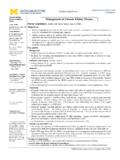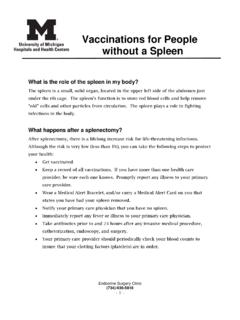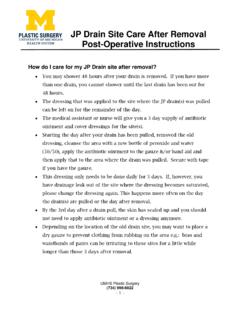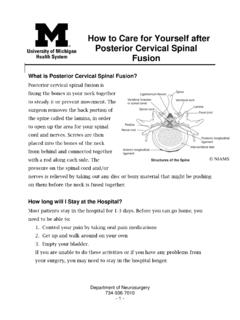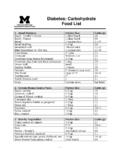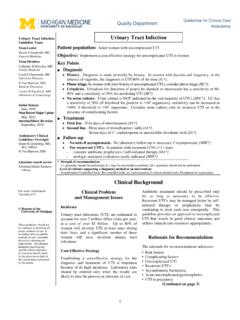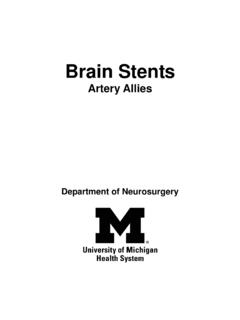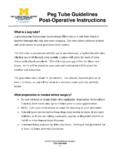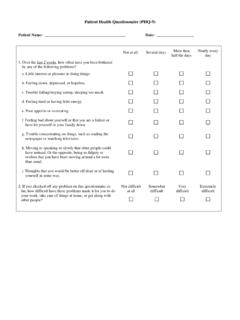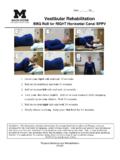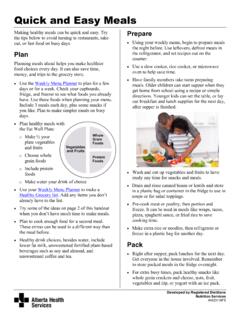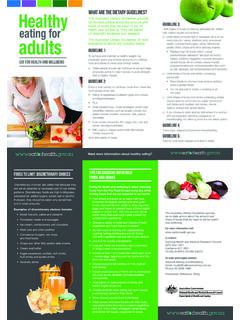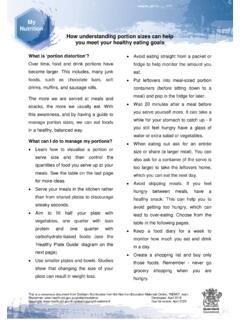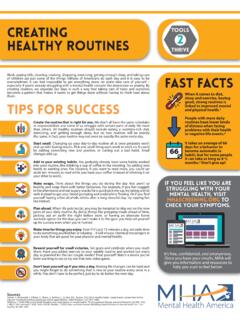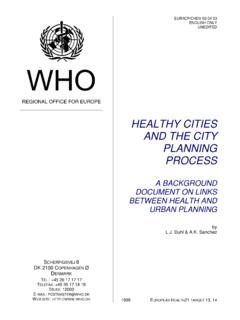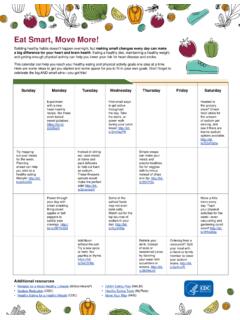Transcription of Healthy Eating for People with Pre-Diabetes
1 Internal Medicine - 1 - Prediabetes and Preventing Type 2 Diabetes What is Prediabetes? Pre-Diabetes means your blood glucose (also known as blood sugar) levels are higher than normal, but not high enough to be called diabetes. Common tests to evaluate for prediabetes are: Fasting Blood Glucose: A blood test done first thing in the morning before you eat or drink anything. Hemoglobin A1c (HbA1c): A blood test done in the lab that will give your average blood sugar over the last 3 months. The reference table below shows the test results for normal, Pre-Diabetes , and diabetes: Condition Fasting Glucose (mg/dL): A1c (Percent): Normal Less than 99 or less Pre-Diabetes Between 100-125 Between Diabetes Over 126 or over Why is prediabetes a problem? Without taking steps to treat it, individuals with prediabetes face an increased risk of developing type 2 diabetes and heart disease. What can I do to decrease my risk of developing diabetes?
2 Lose weight Studies show that that best way to decrease the risk of progressing from Internal Medicine Prediabetes and Preventing Type 2 Diabetes - 2 - prediabetes to type 2 diabetes is by achieving modest weight loss. Losing at least 5% of your body weight can significantly reduce the risk of developing type 2 diabetes. For example: a person who weighs 200 pounds can greatly improve their health by losing 10 pounds. A 5% weight loss for other weights is shown in the table below. You can also calculate your own weight loss by multiplying your weight by Current weight (lbs) 5% weight loss (lbs): 180 9 210 240 12 270 300 15 Diabetes Prevention Programs (DPPs) DPPs are lifestyle change programs that help People with prediabetes achieve modest weight loss through diet and physical activity changes. The program has about 24 1-hour sessions delivered over 12 months. You can ask your doctor for a referral to a DPP or visit to find out more information about local programs offered by the National Kidney Foundation of Michigan.
3 What are some Healthy Eating tips? Avoid drinks with a lot of sugar, like soda, sweet tea, gatorage, and juice. Limit portion sizes of carbohydrates like bread, cereal, pasta, rice, baked goods, and packaged snacks like crackers and granola bars. When Eating carbohydrates, choose options that are high in fiber like non-starchy vegetables, beans, and whole grains like quinoa. Internal Medicine Prediabetes and Preventing Type 2 Diabetes - 3 - Incorporate protein sources like eggs, fish, chicken, meat, tofu, or tempeh into your meals . Include moderate amounts of Healthy fats like extra virgin olive oil, nuts, nut butters, seeds, and avocado. Focus on Eating when you re hungry, and stopping when you re full. Where can I learn more? Diabetes Prevention Center (Kidney Foundation of Michigan): National Diabetes Prevention Program (CDC): MyPlate (USDA): For Healthy recipe ideas, visit the Diabetes Food Hub (American Diabetes Association) Disclaimer: This document contains information and/or instructional materials developed by Michigan Medicine for the typical patient with your condition.
4 It may include links to online content that was not created by Michigan Medicine and for which Michigan Medicine does not assume responsibility. It does not replace medical advice from your health care provider because your experience may differ from that of the typical patient. Talk to your health care provider if you have any questions about this document, your condition or your treatment plan. Adapted from: UC Davis Health System. Healthy Eating for Pre-Diabetes Patient Education by Michigan Medicine is licensed under a Creative Commons Attribution-NonCommercial-ShareAlike International Public License. Last Revised 05/2022
